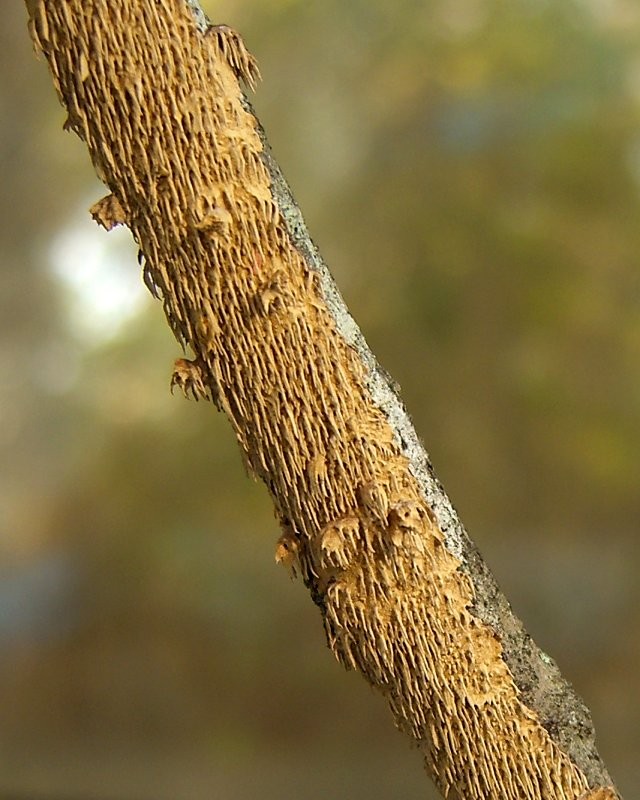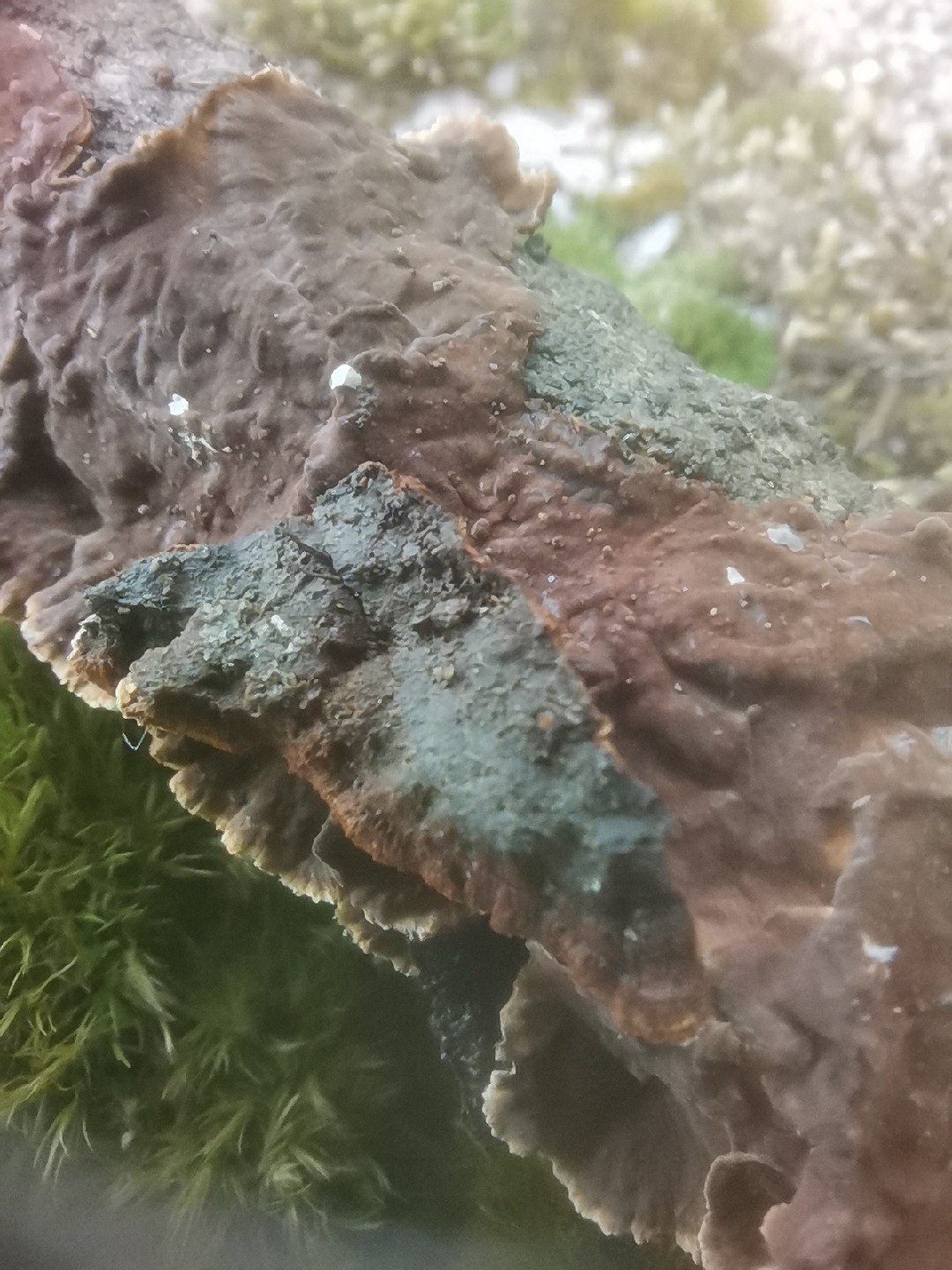Hymenochaetopsis
Nom scientifique: Hymenochaetopsis
Hymenochaetopsis
Nom scientifique: Hymenochaetopsis
 Photo By Jason Hollinger , used under CC-BY-2.0 /Cropped and compressed from original
Photo By Jason Hollinger , used under CC-BY-2.0 /Cropped and compressed from original La description
Hymenochaetopsis sont un groupe de champignons que l'on trouve couramment sur les bois durs en décomposition. Ils jouent un rôle important dans la décomposition des matières végétales résistantes comme la lignine, aidant ainsi à recycler les nutriments dans l'écosystème. La plupart des espèces de ce groupe forment des structures minces, croûteuses, à la surface du bois. Bien que typiquement trouvés dans les forêts, hymenochaetopsis peuvent également prospérer dans les zones urbaines où il y a suffisamment de bois en décomposition.
Espèces de Hymenochaetopsis
Classification scientifique
Phylum
Basidiomycètes Classe
Agaricomycetes Ordre
Hymenochaetales Famille
Hyménochétacées Genre
Hymenochaetopsis 